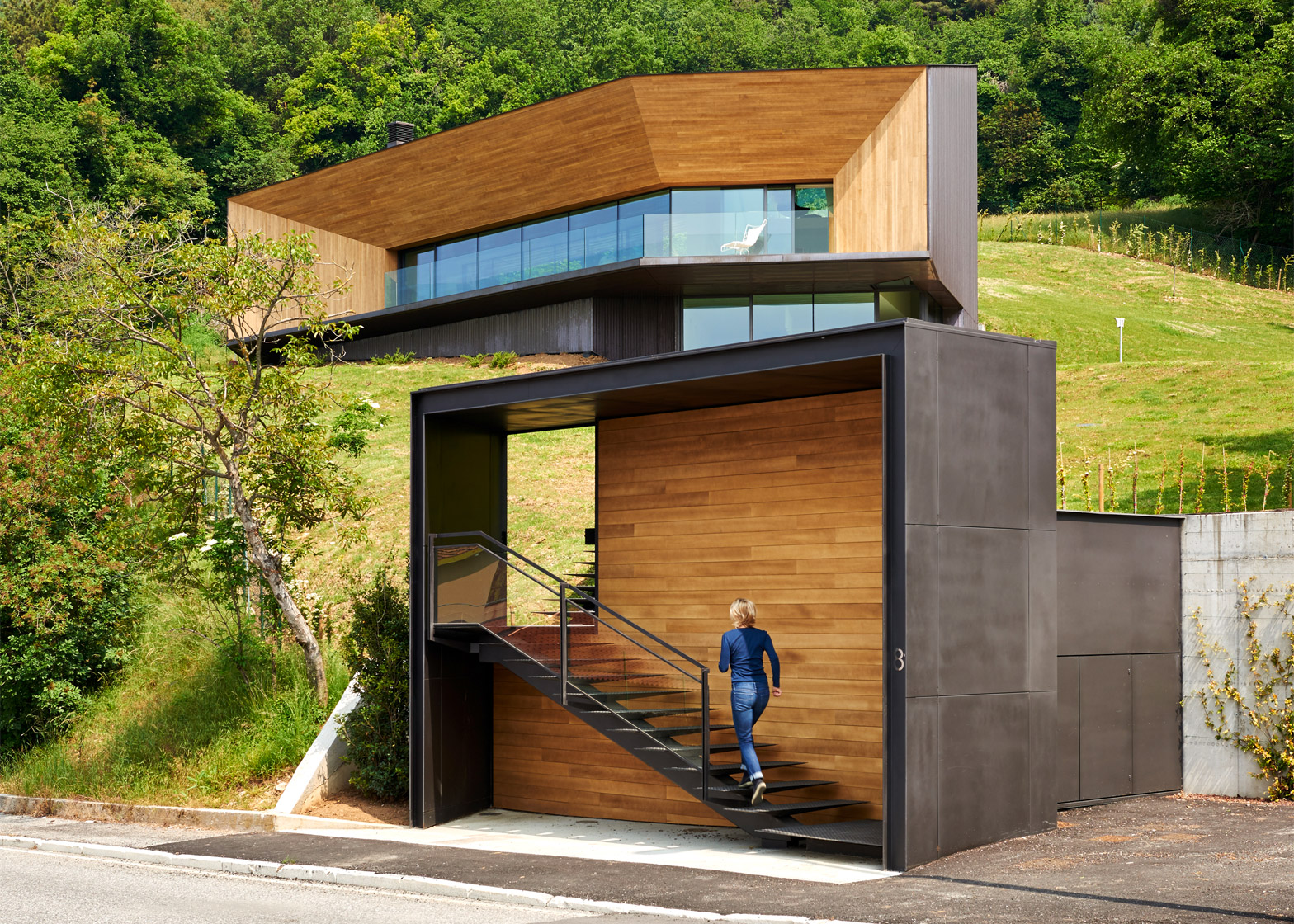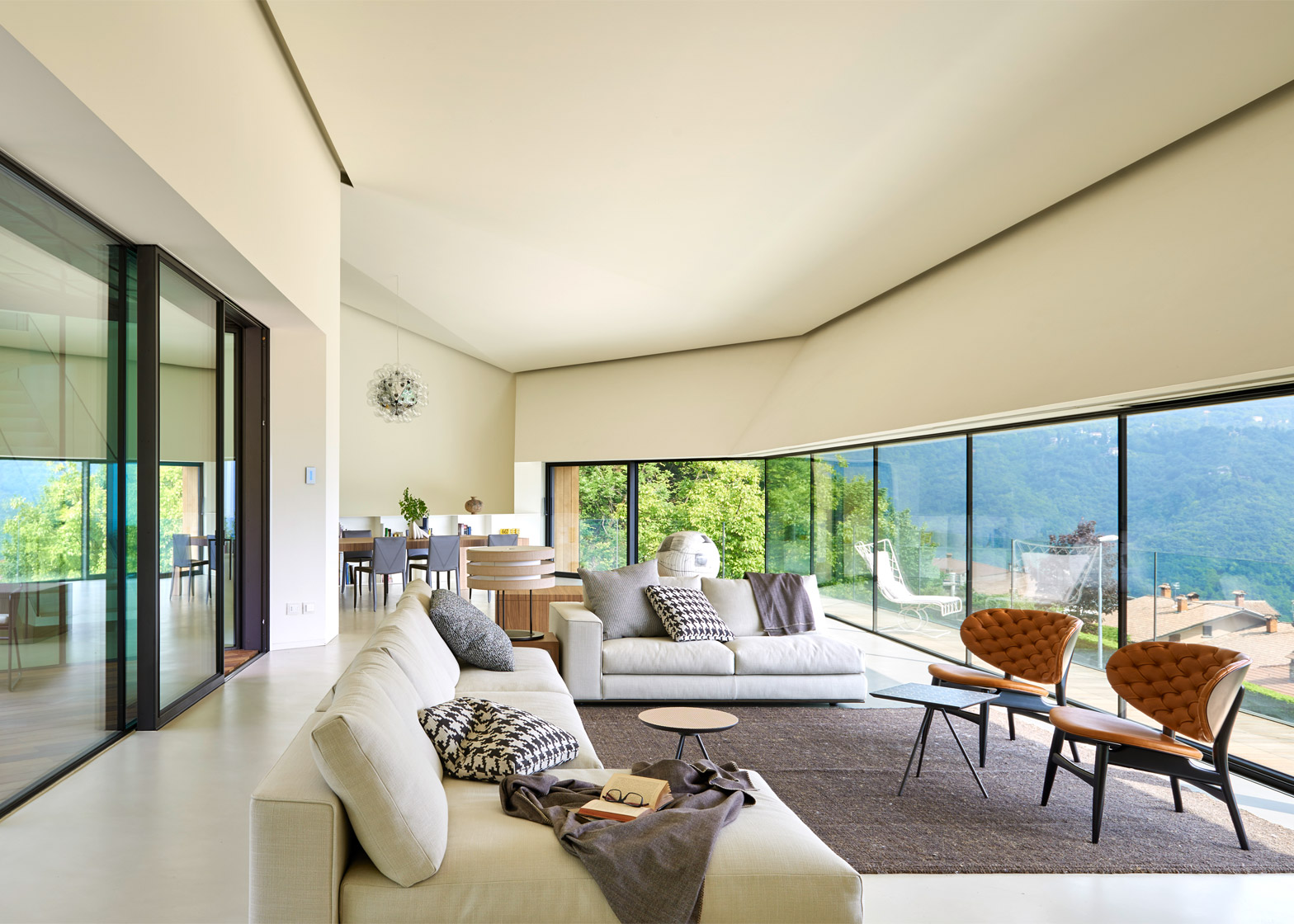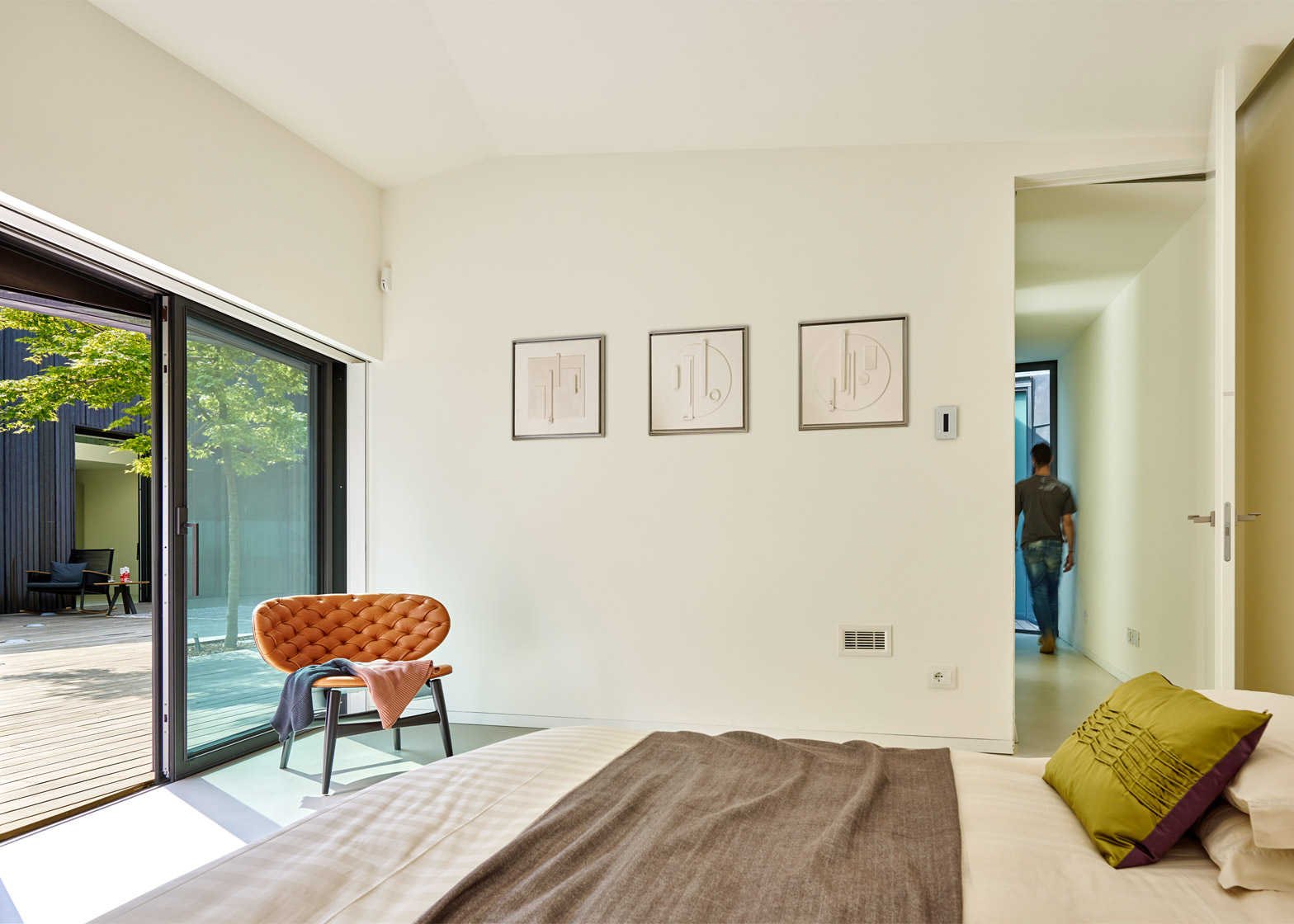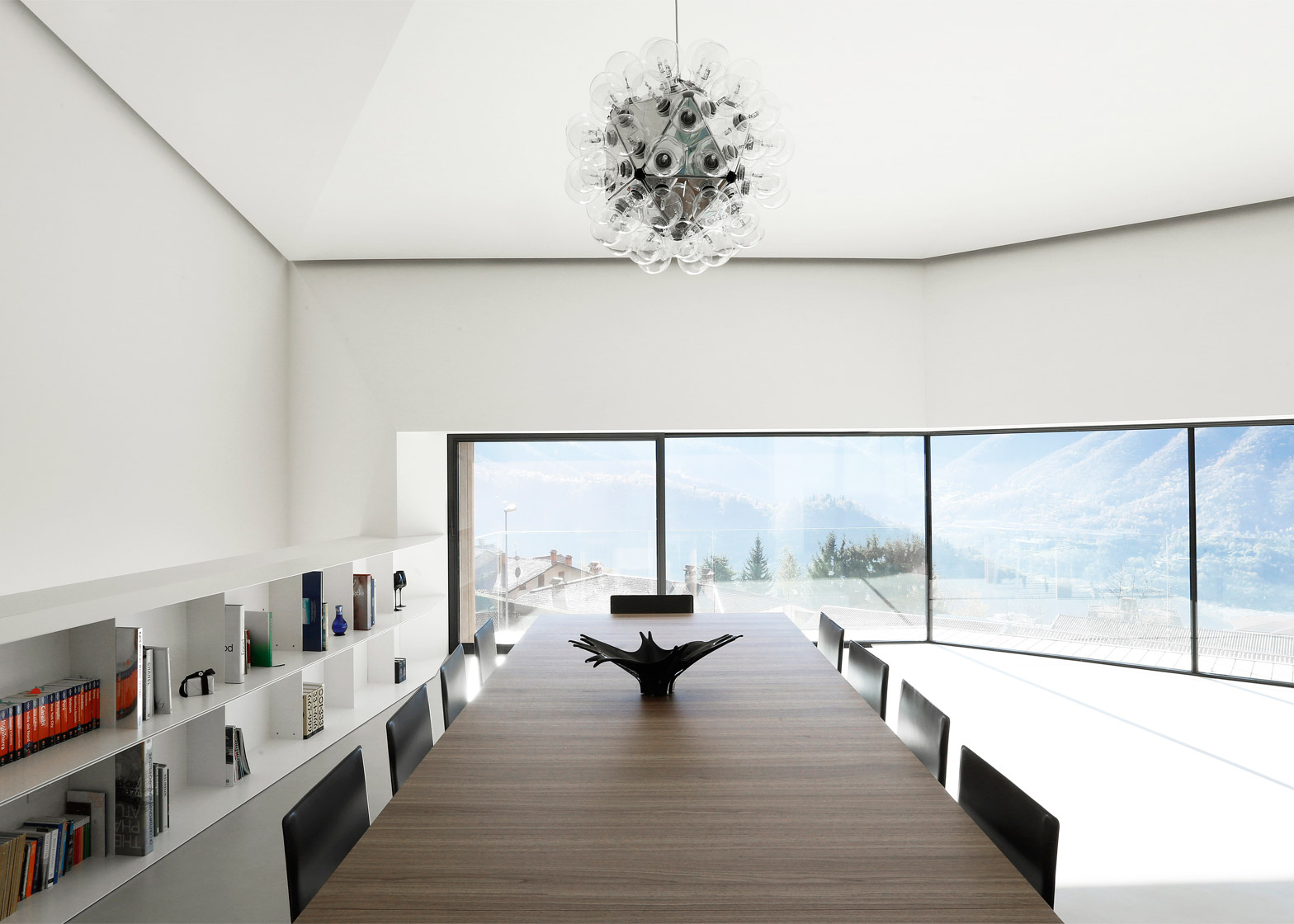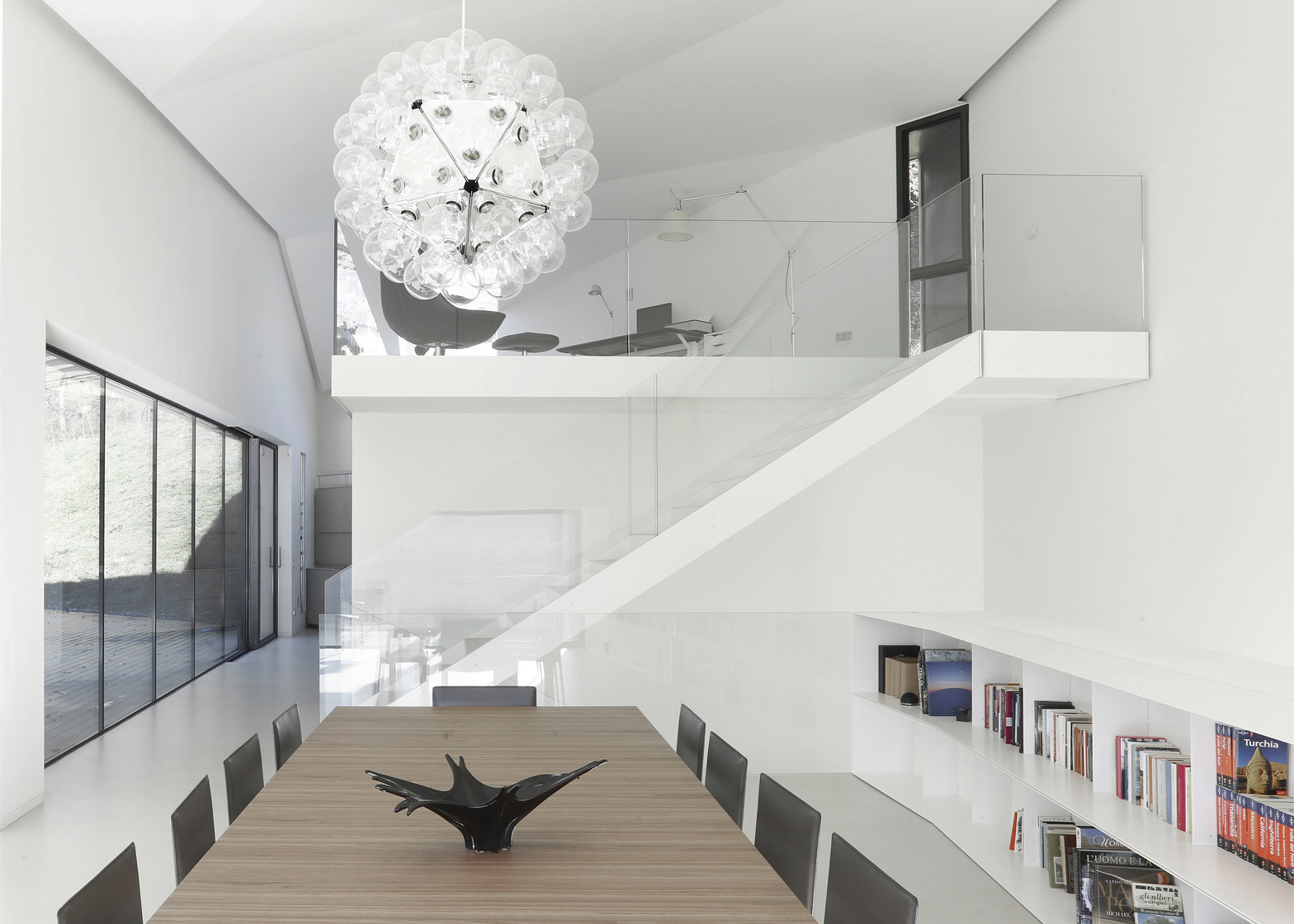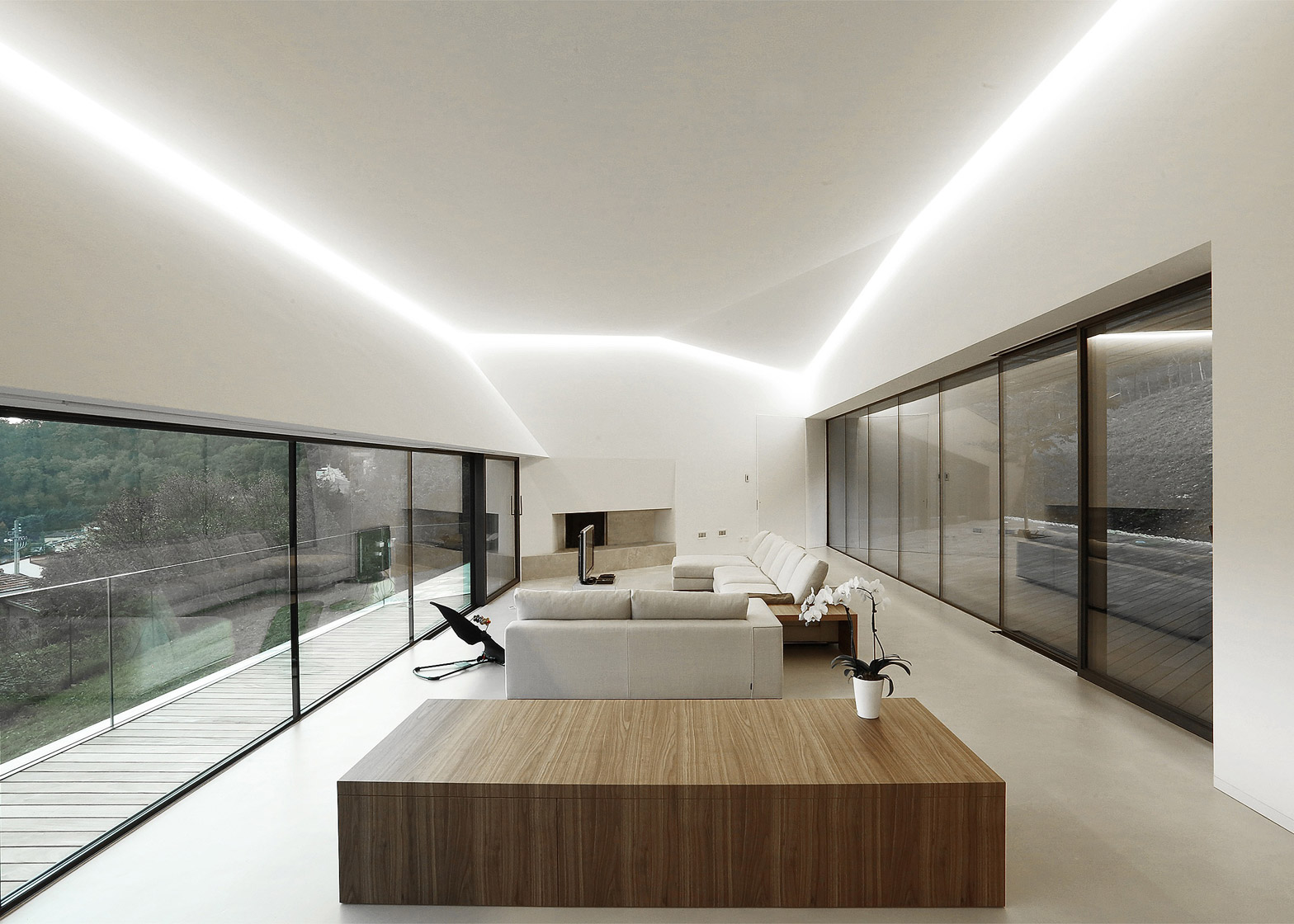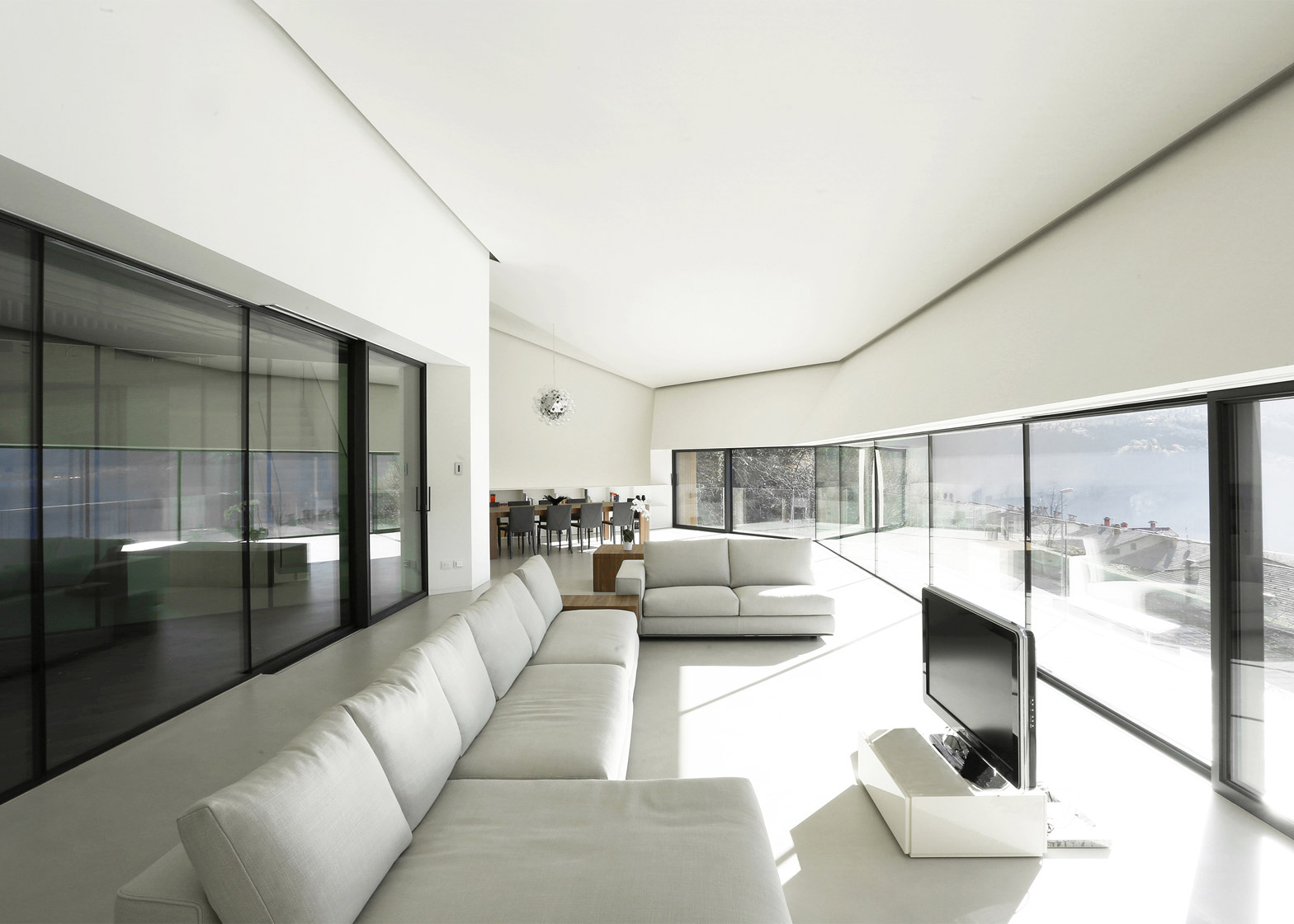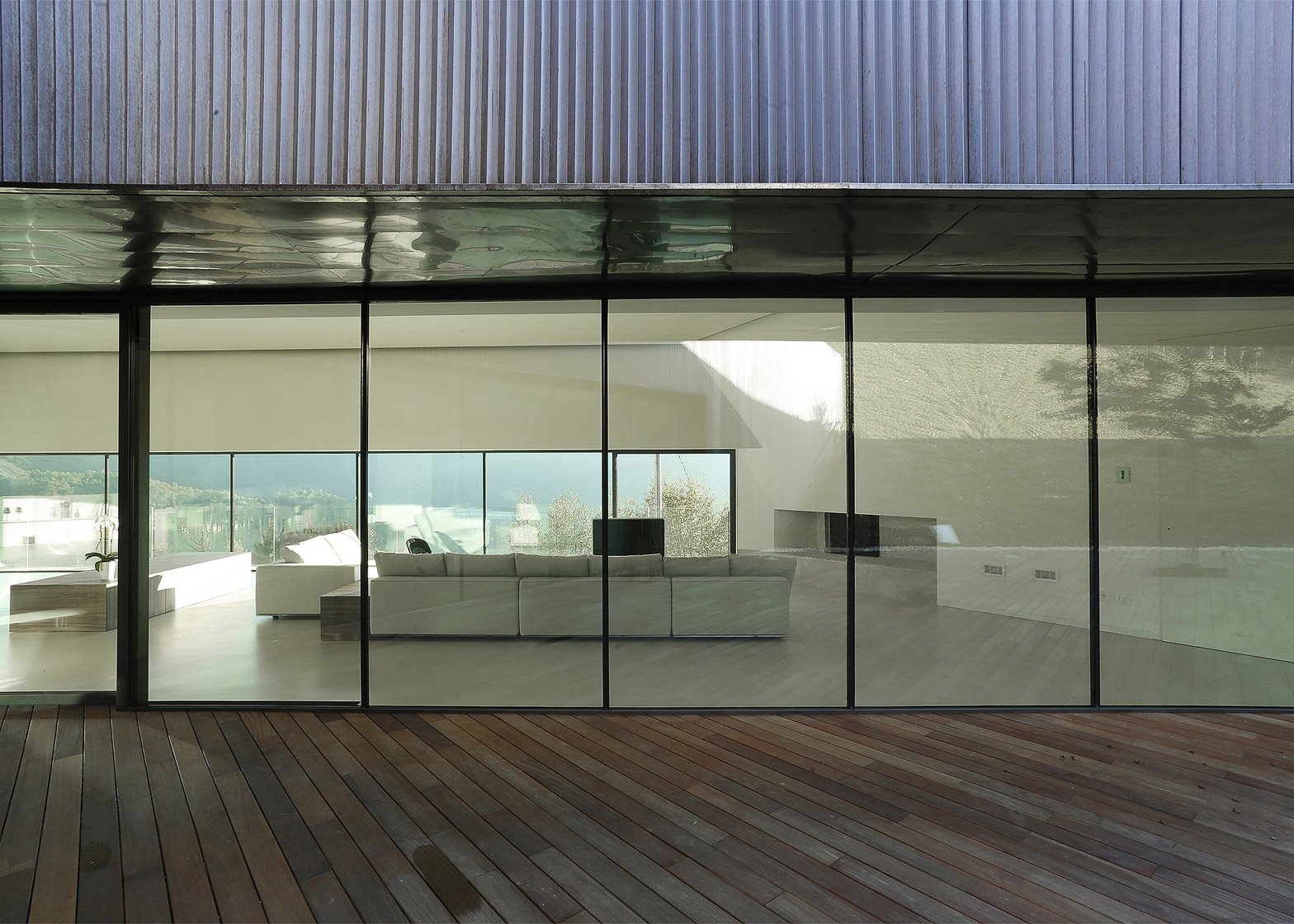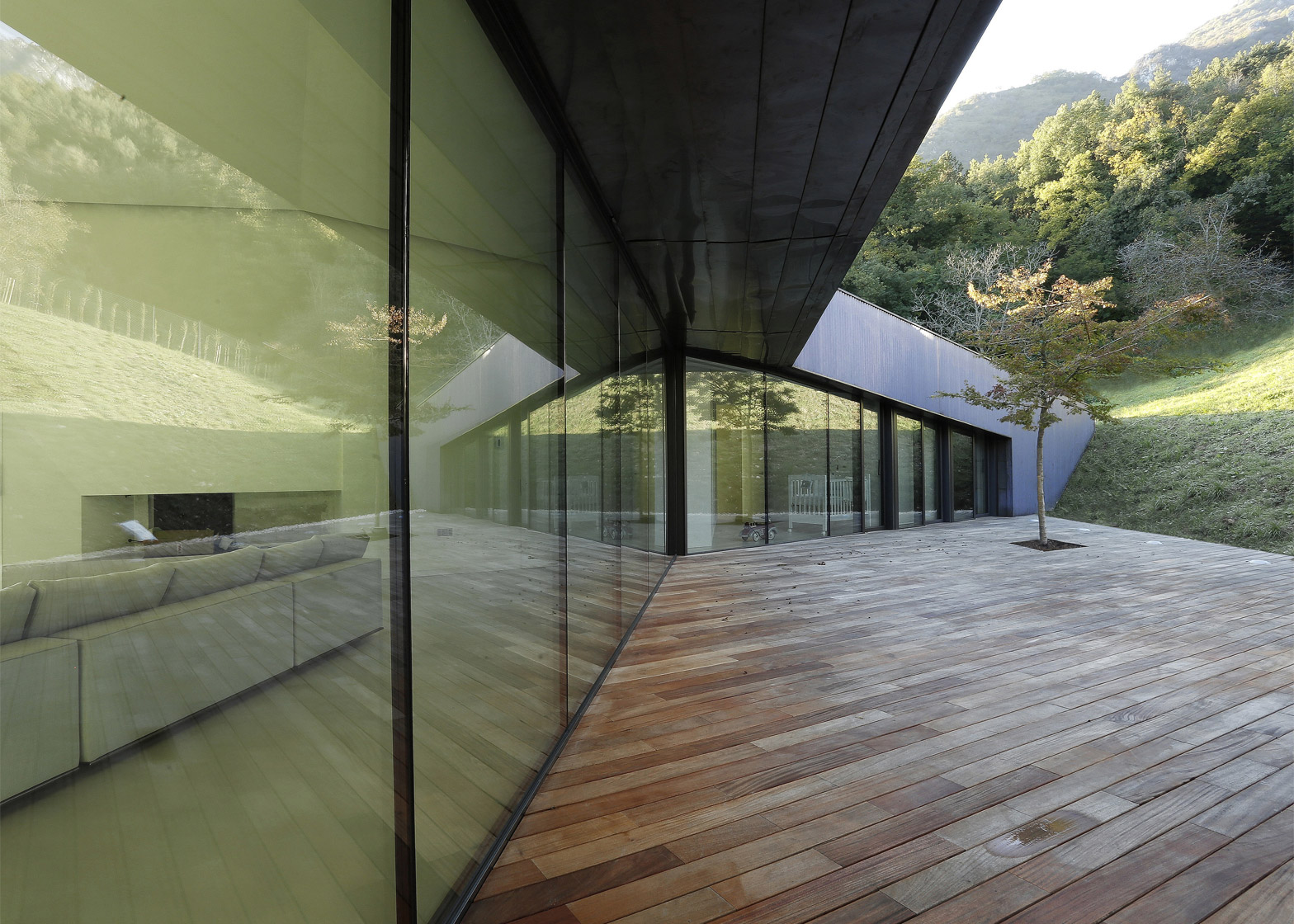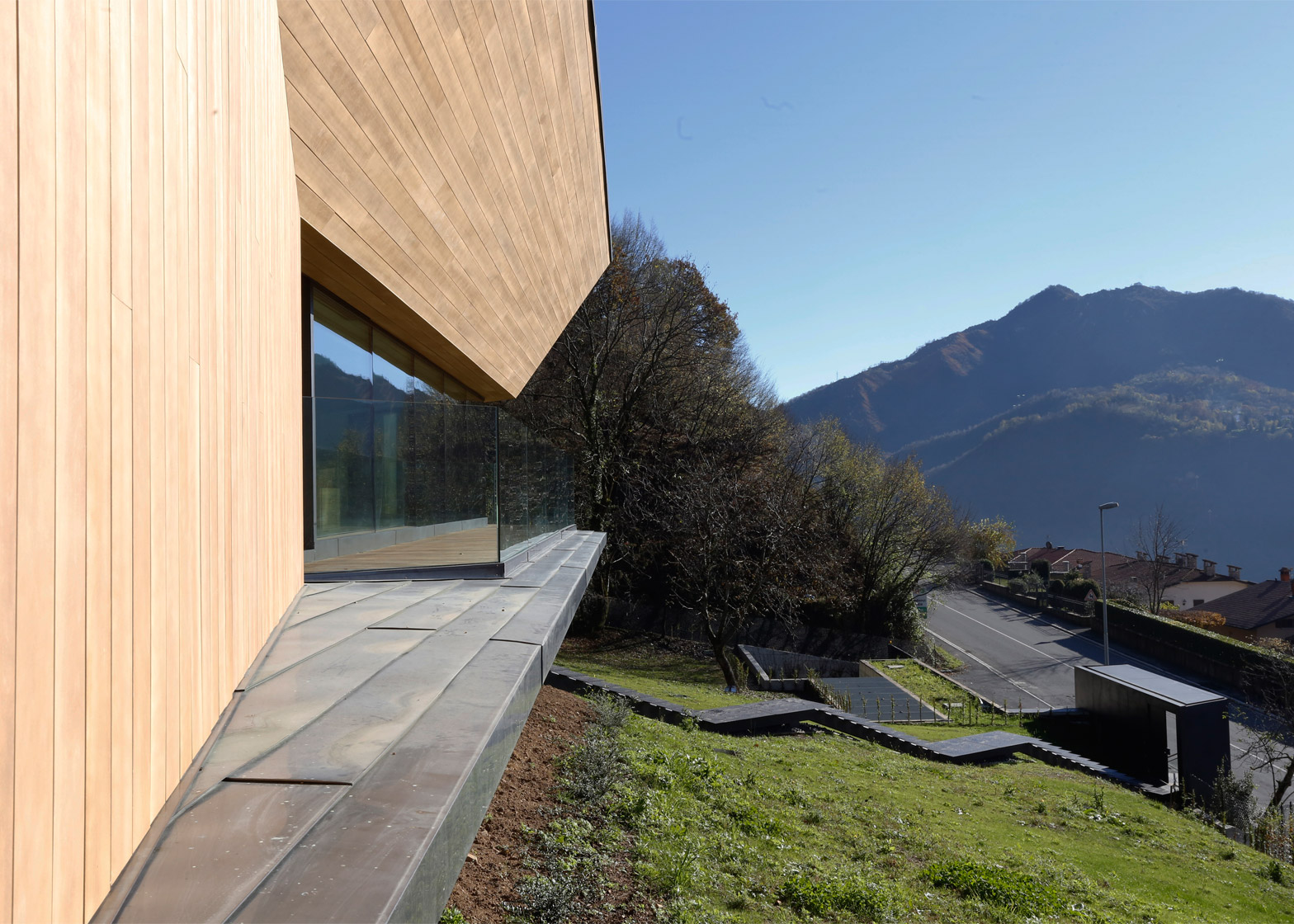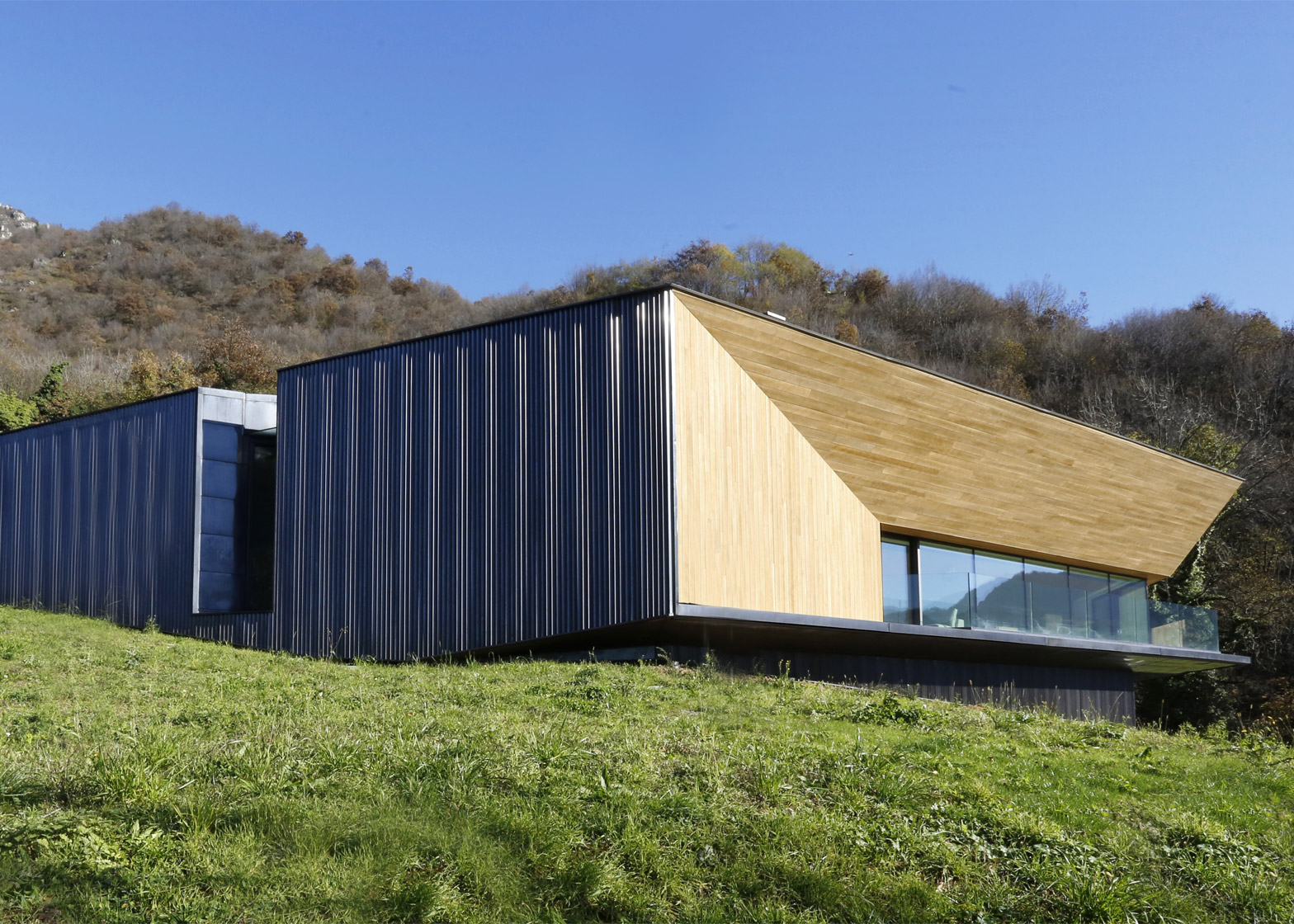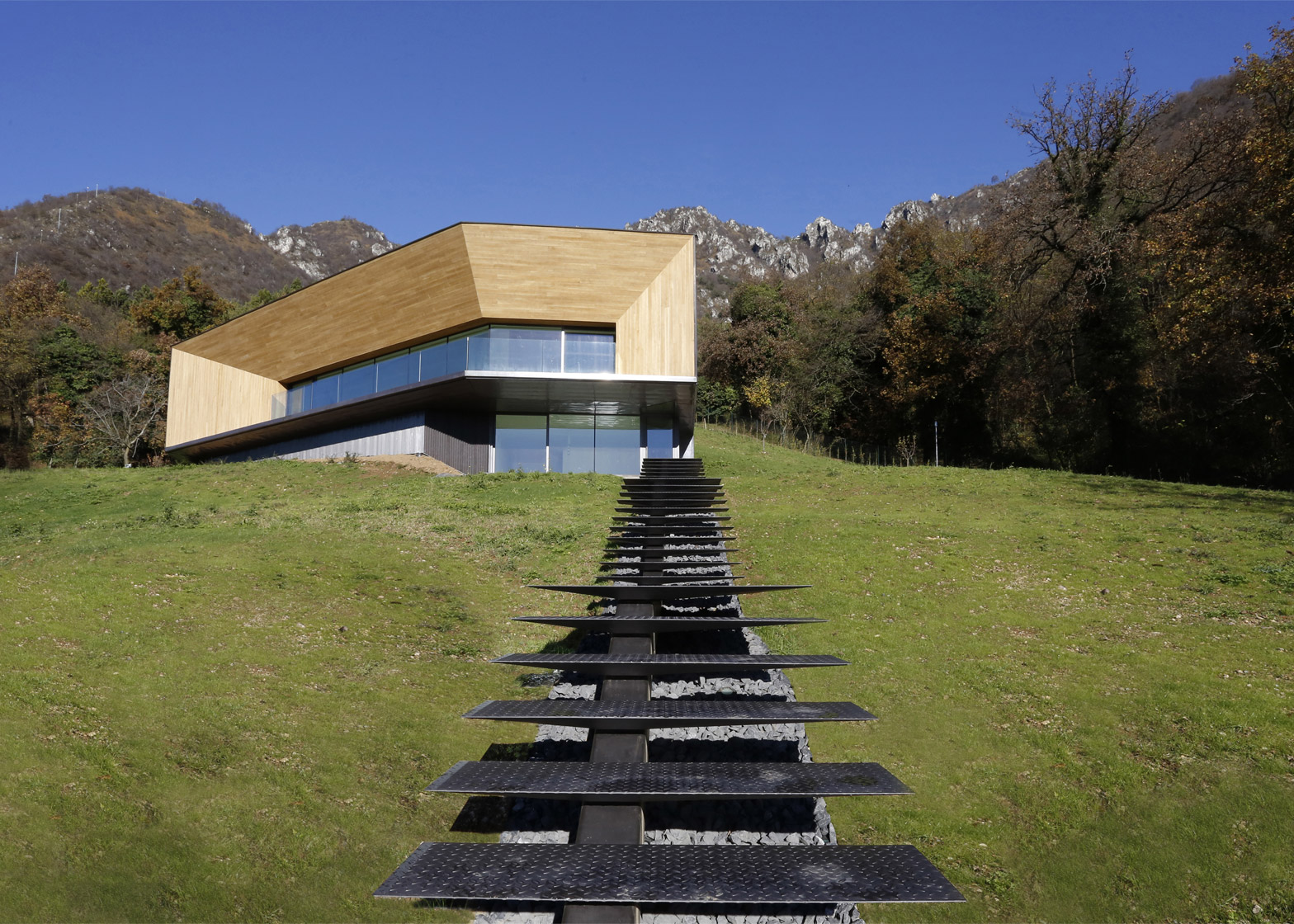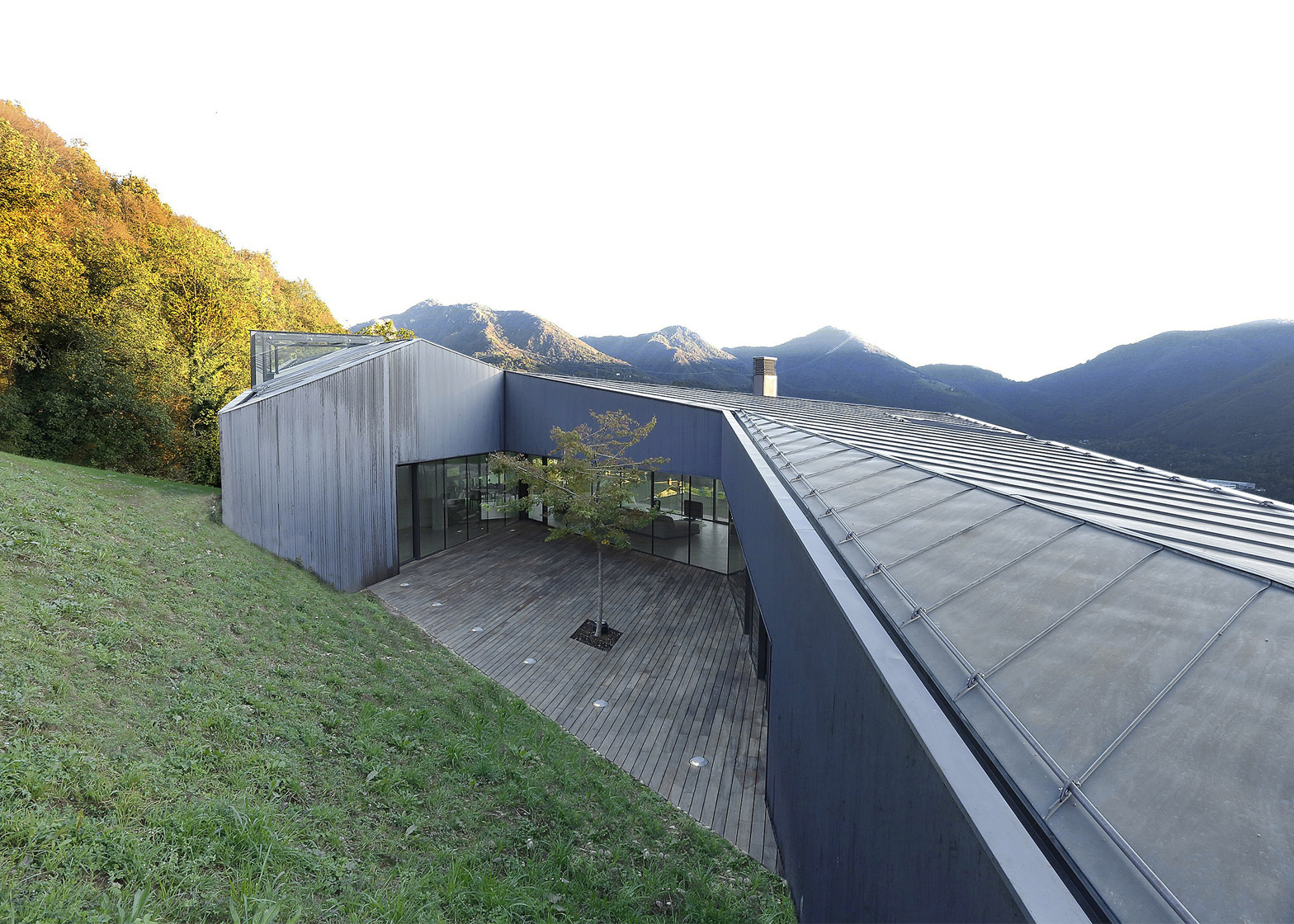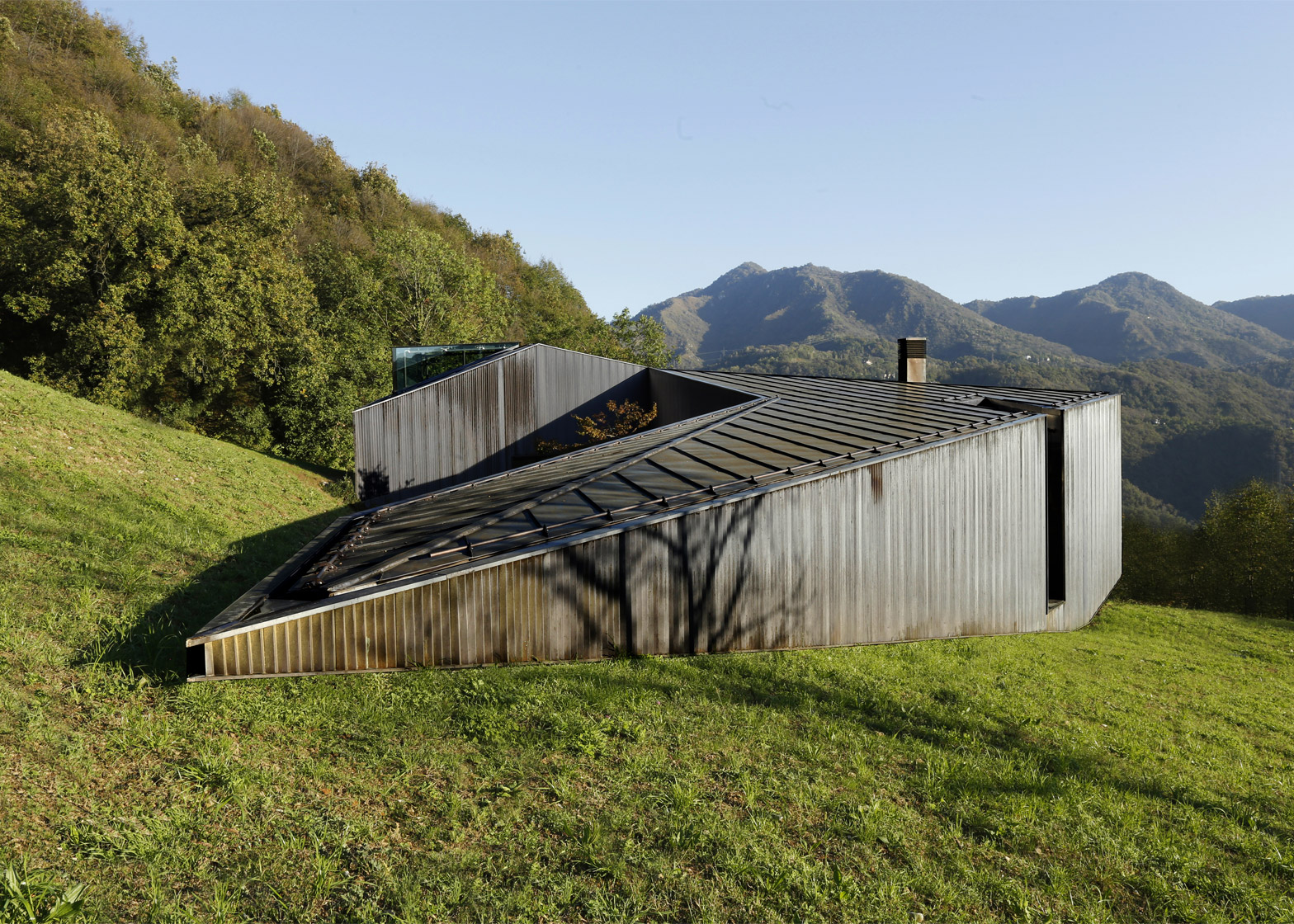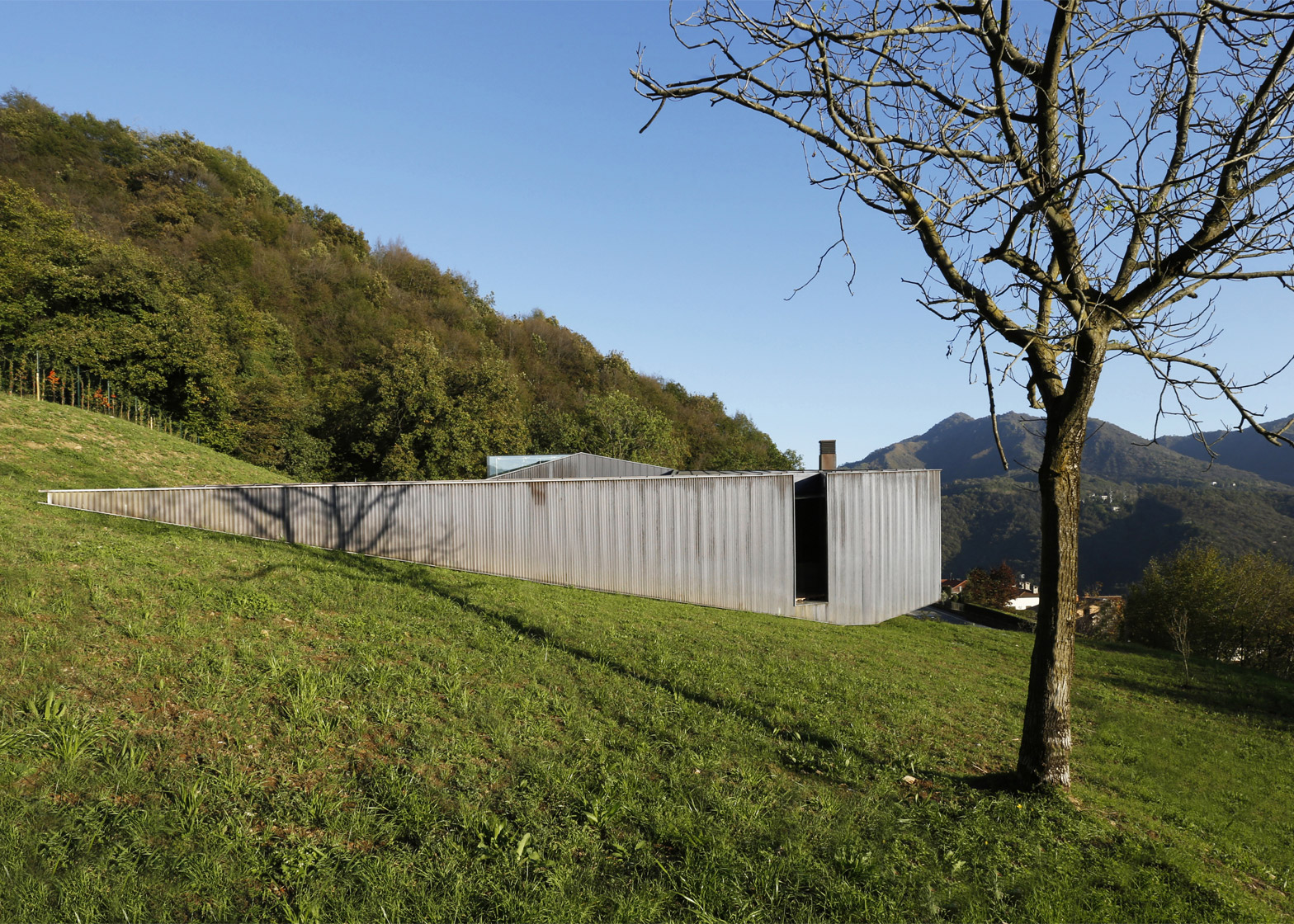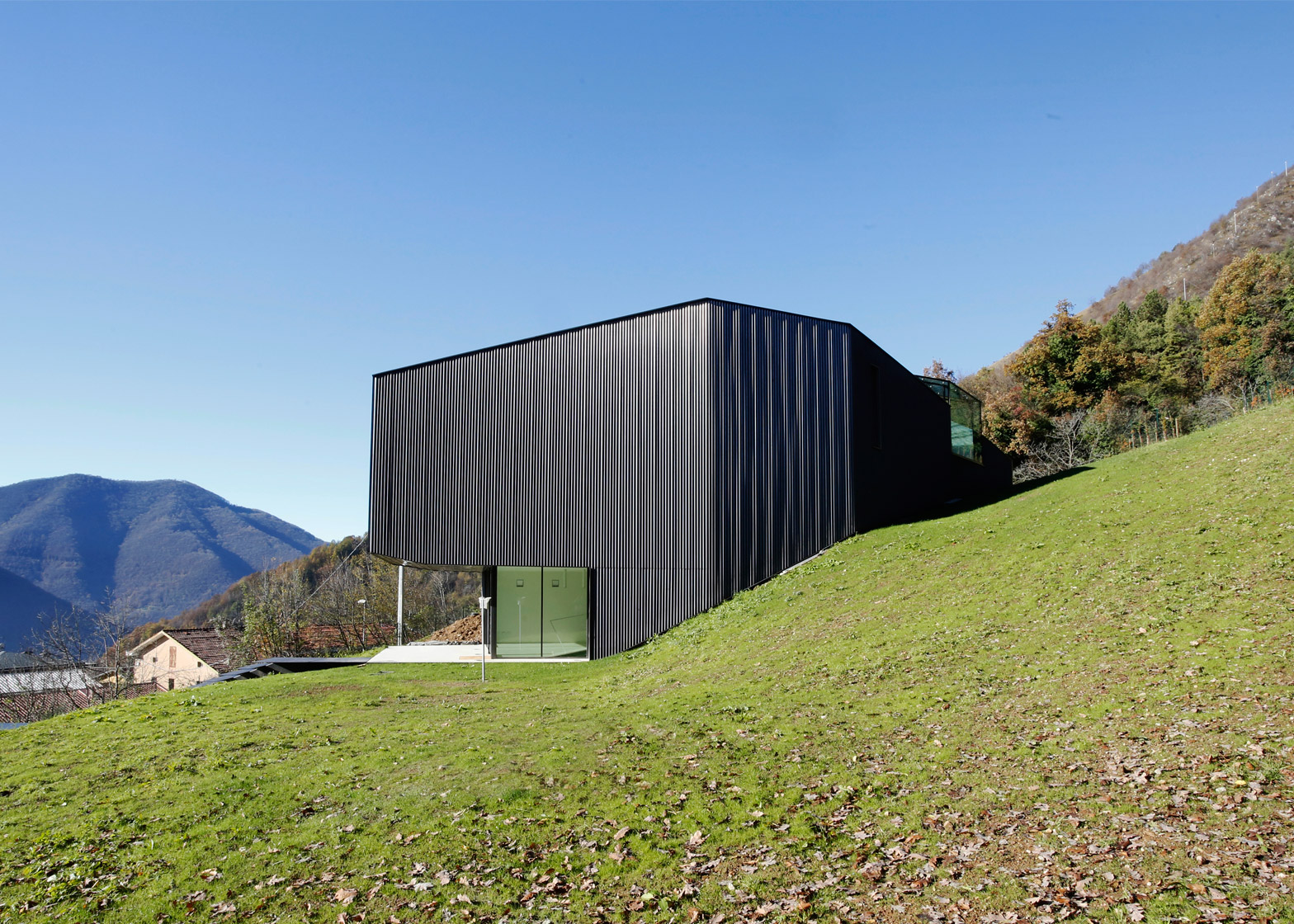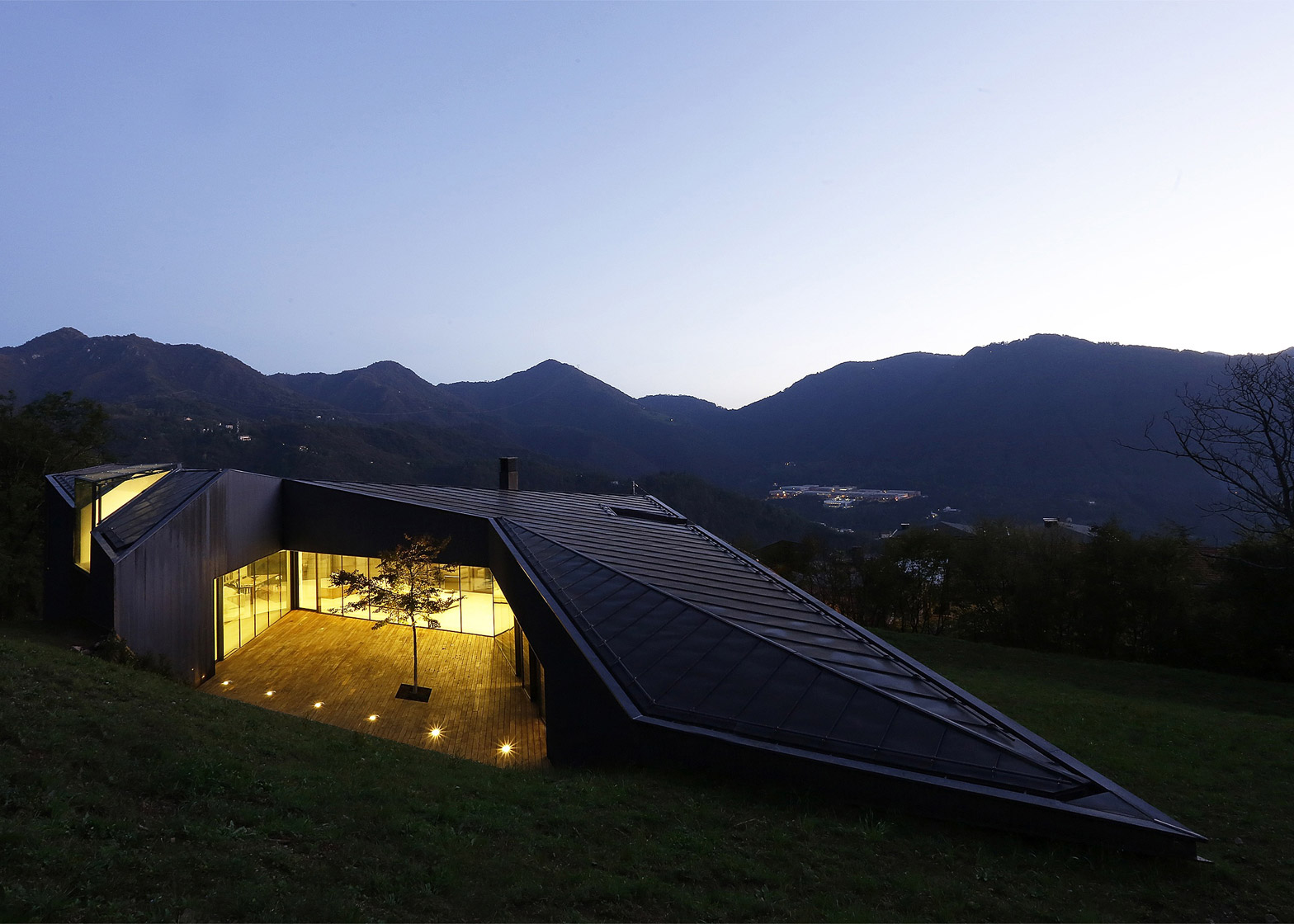A panoramic window surrounded by a faceted wood and corrugated copper frame dominates the facade of this Alpine residence by Camillo Botticini Architetto (+ slideshow).
Set in a clearing near the Passo del Cavallo, a high Alpine pass in Italy's Brescia province, Alps Villa is framed by a open valley to the south and the peaks of the Alps to the north.
The broad window faces out onto the valley, while a courtyard sunken into the slope to the rear of the house gives views of the mountains that rise 1,200 metres above sea level.
Botticini wanted to strike a balance of "harmony and tension" between the building and the site, and this semi-submerged design helps to creates the illusion that the structure is rooted to the hillside.
"We are still in a place close to the urban noise but at the same time far away, where the aroma of mountain herbs and grazing sheep seem to have stopped time," said the Italian architect, whose studio is based locally.
"The house looks like in his primary relationship with the landscape without other artificial elements other than the suspended staircase that cuts the grass slope."
The sheets of pre-rusted corrugated copper and treated Accoya wood that cover the walls help to further integrate the building with the site.
"The ventilated wall copper is modulated with a slight pleating to vibrate the light on the non-reflecting surface," explained Botticini. "The wood of the great splay reflects light that is refracted from the south."
A flight of textured metal steps runs up the hillside from a steep hairpin road that bypasses the front of the house. The foot of the stairs is enclosed by a gatehouse-like structure made from same oxidised copper and wood as the house.
The house's glazed entrance is sheltered by the broad window and a terrace set on its overhanging sill.
Inside, an irregular C-shaped plan curves around to protect the iroko wood patio. The plan is split into three sections, the first hosting three bedrooms and their corresponding bathrooms, the second a living and dining space, and the third a kitchen and circulation area.
The height of the building varies due to the sloping site. A mezzanine within its highest part hosts a study above the living area, while a kitchen slotted beneath opens onto the patio.
"It creates an integrated fluid area and open to the outside, simultaneously protected, almost closed on the east and west sides," said the architect.
A staircase and elevator connect the basement garage with the living spaces above, which are lit by the window and a long skylight. Artificial lighting it set into recessed grooves around the perimeter of each room.
The interior floors are made from sand-coloured resin throughout and the walls are covered in white-painted plasterboard.
Geothermal power, natural ventilation and well-insulated walls help to keep energy consumption and pollution levels to a minimum.
"We wanted an environmentally friendly home in the building materials and insulation, equipped with ventilated walls, a sustainable home in the settlement balance with the landscape," said the architect.
Photography is by Eugeni Pons and Niccolò Galeazzi.

